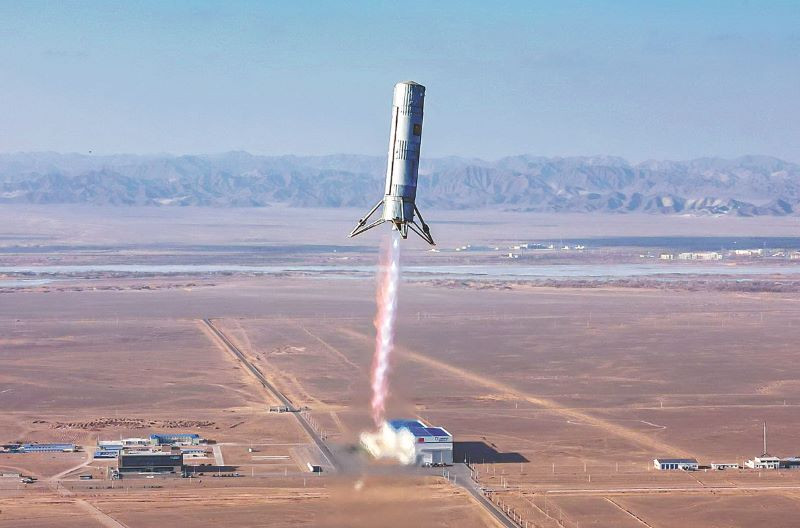
China achieves milestone as reusable carrier rocket completes first 10-km VTOL test
China's reusable carrier rocket successfully completed a 10-km vertical take-off and landing (VTOL) flight test at the Jiuquan Satellite Launch Center in northwest China on Sunday. It marks the country's largest VTOL flight test for a reusable carrier rocket, and also the first application of its domestically developed deep variable-thrust liquid oxygen-methane (LOX/Methane) engine on a 10-km return flight. Developed by the Shanghai Academy of Spaceflight Technology, the carrier rocket features a 3.8-meter diameter rocket body, powered by three 70-tonne LOX/Methane engines and equipped with a full-size landing buffer system. Read:China's Long March-6C rocket makes maiden flight The rocket achieved vertical soft landing at a fixed point through take-off, ascent and variable-thrust descent. The test fully verified the rocket's VTOL configuration, heavy-load landing buffer technology, reusable propulsion technology with high and strong variable thrust, and high-precision landing navigation and control technology. The test has laid a technical foundation for the maiden flight of a four-meter class reusable carrier rocket, which is scheduled for 2025. The VTOL capability is an improvement on the rocket's original shape, aiming to make its first stage reusable. This innovation is aimed at enhancing the efficiency of launch vehicles and saving spaceflight costs.

China's reusable carrier rocket successfully completed a 10-km vertical take-off and landing (VTOL) flight test at the Jiuquan Satellite Launch Center in northwest China on Sunday. It marks the country's largest VTOL flight test for a reusable carrier rocket, and also the first application of its domestically developed deep variable-thrust liquid oxygen-methane (LOX/Methane) engine on a 10-km return flight. Developed by the Shanghai Academy of Spaceflight Technology, the carrier rocket features a 3.8-meter diameter rocket body, powered by three 70-tonne LOX/Methane engines and equipped with a full-size landing buffer system. Read:China's Long March-6C rocket makes maiden flight The rocket achieved vertical soft landing at a fixed point through take-off, ascent and variable-thrust descent. The test fully verified the rocket's VTOL configuration, heavy-load landing buffer technology, reusable propulsion technology with high and strong variable thrust, and high-precision landing navigation and control technology. The test has laid a technical foundation for the maiden flight of a four-meter class reusable carrier rocket, which is scheduled for 2025. The VTOL capability is an improvement on the rocket's original shape, aiming to make its first stage reusable. This innovation is aimed at enhancing the efficiency of launch vehicles and saving spaceflight costs.
